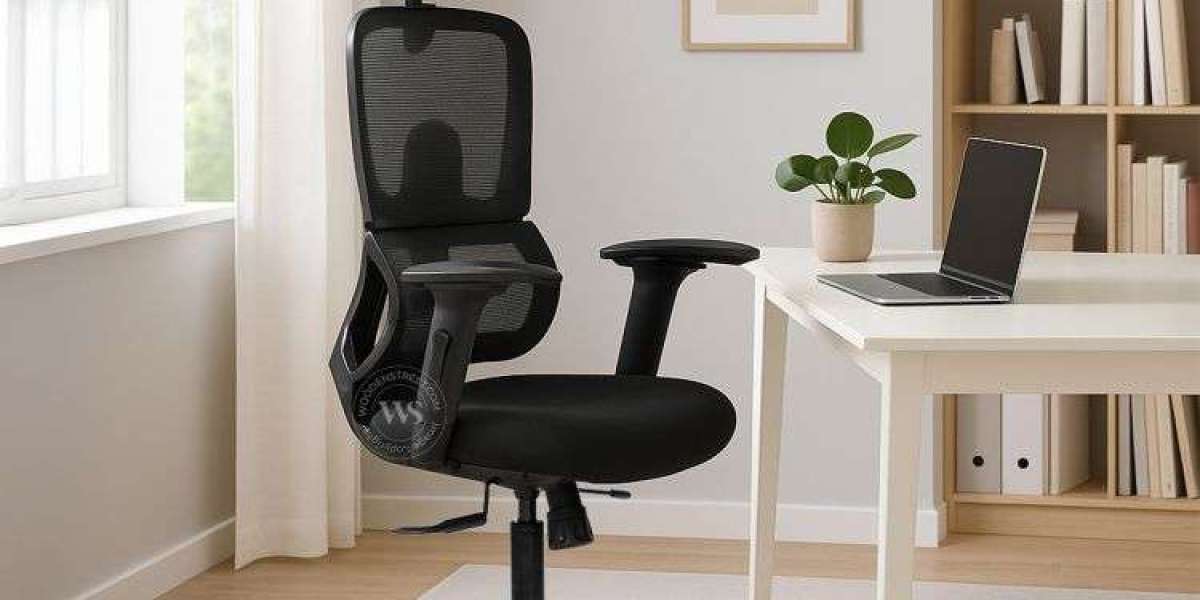Whether it is for a professional workplace or a home office, the right chair makes a huge difference in productivity, comfort, and overall well-being. Many people underestimate the importance of this essential piece of furniture, but choosing wisely can transform daily work experiences.
The Role of Comfort in Work Efficiency
An office chair is not just another piece of furniture; it directly influences how a person feels throughout the day. Sitting for extended hours in an uncomfortable chair leads to back pain, stiffness, and fatigue. On the other hand, a chair designed with comfort in mind encourages good posture, reduces strain, and helps maintain focus. Comfort is more than just padding—it involves seat depth, height adjustability, armrest support, and lumbar cushioning. All these features combined allow the body to remain in a neutral position, minimizing stress on muscles and joints.
Ergonomics as a Key Factor
The best office chair for everyday use should always incorporate ergonomics. Ergonomics is about creating a work environment that adapts to the user’s natural body movements and posture. A chair that can be adjusted in multiple ways ensures that individuals of different heights and body types can find the perfect seating position. Adjustable lumbar support is especially important, as it helps maintain the natural curve of the spine. Similarly, a chair with adjustable armrests can prevent shoulder strain, while a reclining function allows the body to rest between tasks.
Durability and Material Choices
When selecting an office chair, durability should also be a priority. Since the chair will be used daily, the material must be able to withstand frequent use without losing its supportive qualities. Mesh backs are popular because they provide ventilation, preventing heat buildup during long sitting hours. Leather or fabric options offer a more traditional look, with cushioning that adds extra comfort. Beyond appearance, the strength of the frame, base, and wheels determines how well the chair holds up over time. Investing in a durable chair ensures not only comfort but also long-term value.
Design That Matches Modern Workspaces
The appearance of an office chair is another factor that cannot be ignored. In professional workplaces, chairs are part of the overall décor, and in home offices, they contribute to creating a productive atmosphere. Sleek designs with minimalistic features blend seamlessly into modern interiors, while classic executive styles add a sense of authority. A well-designed chair brings balance between functionality and aesthetics, making it easier to create a workspace that is both efficient and visually appealing.
Supporting Health and Well-Being
Poor seating has long-term effects on health. Neck strain, back problems, and even reduced circulation can result from a poorly designed chair. The right office chair helps prevent these issues by promoting proper alignment. Chairs with adjustable seat tilt encourage active sitting, ensuring better blood flow to the legs. Headrests provide support for the neck, especially during breaks. Over time, these small features make a big difference in maintaining overall health, which in turn reduces sick days and increases productivity.
The Balance Between Cost and Value
Many people hesitate to invest in a high-quality office chair, assuming that a simple one will suffice. However, considering the number of hours spent sitting each day, a chair is more of a necessity than a luxury. A well-built office chair might cost more initially but pays off through improved comfort, fewer health problems, and greater work efficiency. Looking at it as a long-term investment helps in understanding its real value.
Everyday Practical Features
Beyond ergonomics and comfort, an office chair must also provide convenience in daily use. Swivel functions allow easy movement without straining the body, while smooth-rolling wheels make it effortless to shift positions within a workspace. Height adjustment is crucial for aligning with desks of different sizes, ensuring that arms remain at the correct angle while typing. These practical features, though often overlooked, are what make a chair suitable for continuous use throughout the day.
Personalizing the Choice
No two individuals have the same requirements when it comes to seating. Some prefer a soft cushioned feel, while others opt for firmer support. Body weight, height, and personal working style all influence the right choice of chair. Taking the time to test different options and adjusting settings helps in finding a chair that feels almost custom-made. Personalization ensures that the chair not only supports the body but also enhances the overall work experience.
Creating a Productive Environment
The right office chair is more than a seating solution; it is a tool that shapes the work environment. A comfortable and ergonomic chair allows individuals to concentrate on tasks without the distraction of discomfort. It contributes to creating a workspace that feels professional, organized, and motivating. Ultimately, productivity is not just about technology or organization—it is also about physical comfort and well-being, which begins with a good chair.
Conclusion
Finding the best office chair for everyday work needs requires careful consideration of comfort, ergonomics, durability, and design. Since it directly affects health and productivity, it should never be treated as a secondary purchase. A thoughtfully chosen chair reduces fatigue, prevents health issues, and supports efficiency throughout long working hours. With the right balance of functionality and style, the perfect office chair becomes an essential partner in achieving success in any work setting.














